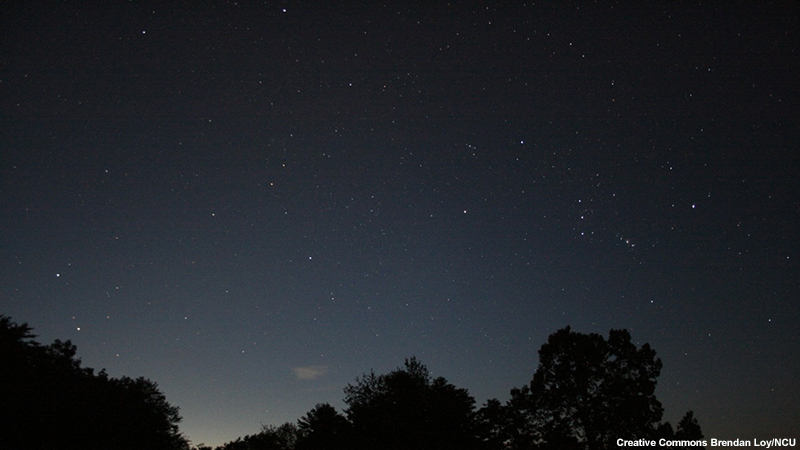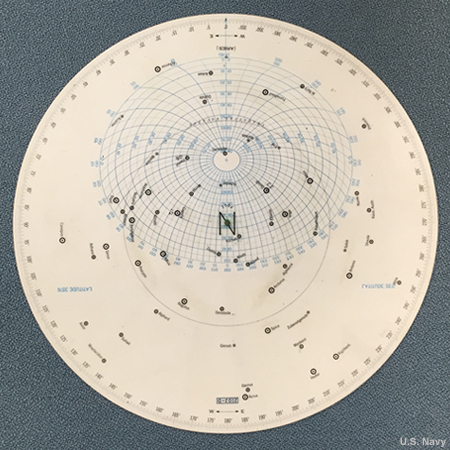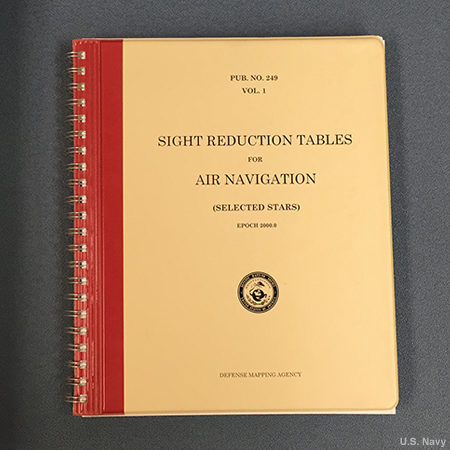A Day in the Life of a Navigator » Preparing for a Morning Observation

Before navigators can start a series of observations, they need to decide which objects will be visible, and which will give the best lines of position. To take a sight using stars, it must be light enough to see the horizon, but dark enough to see the stars. The period when the sky brightness allows for this is referred to as "nautical twilight." The times of twilight and sunrise are determined by using The Nautical Almanac; strip forms can be used to help.

The decision of which objects to observe must be made well before morning twilight. Two methods are often used to identify the best objects. We could use a 2102-D Star Finder, also known as a Rude Star Finder, which is a plastic celestial map that shows the positions of stars used for navigational purposes.

Or we could use the book, "Publication 249 Sight Reduction Tables for Air Navigation (Selected Stars)," also known as "Pub 249." Both the Star Finder and Pub 249 indicate which objects are best to observe, and also give us their rough positions in the sky so we know where to look for them.

Pub 249 is also known as AP 3270 outside of the U.S.
Using the Rude Star Finder and Pub 249 are not difficult, but are outside the scope of this module. For our example location and date, the three best stars are Capella, Deneb, and Fomalhaut.